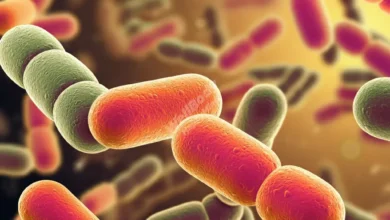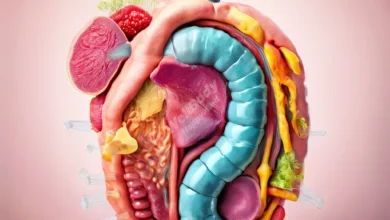The Microbiome Diet: Personalized Plans for Gut-Driven Health

Did you know that your gut is home to trillions of tiny organisms that play a crucial role in your overall health? This bustling community of microbes, known as the microbiome, has become a hot topic in the world of wellness. Recent research suggests that the food we eat can significantly impact our gut health, which in turn affects our entire body and mind.
Imagine being able to tailor your diet to support these beneficial bacteria, potentially:
- Improving your digestion
- Boosting your immune system
- Enhancing your mood
That’s where the microbiome diet comes in – a personalized approach to eating that focuses on nourishing your gut for better overall health. In this article, we’ll explore how you can create a microbiome diet plan that’s perfect for your unique needs and take a step towards gut-driven wellness.
What is the Microbiome Diet?
The Microbiome Diet is a nutrition plan designed to optimize your gut health by focusing on foods that support a diverse and healthy community of gut bacteria. At its core, this diet is about nourishing the beneficial microorganisms in your digestive system while avoiding foods that may harm them.
Key principles of the Microbiome Diet include:
- Eating probiotic-rich foods to introduce beneficial bacteria
- Consuming prebiotic foods to feed these good bacteria
- Avoiding processed foods and substances that can harm gut flora
- Personalizing the diet to suit individual needs and gut health goals
The concept of the Microbiome Diet was developed by Dr. Raphael Kellman, a pioneer in integrative and functional medicine. He introduced this approach in his 2014 book, “The Microbiome Diet: The Scientifically Proven Way to Restore Your Gut Health and Achieve Permanent Weight Loss.”
Since then, the idea of eating for gut health has gained significant traction in the wellness community. It’s not just about weight loss anymore; it’s about creating a personalized gut health plan that can potentially improve various aspects of your overall well-being.
The Science Behind the Microbiome Diet
The Microbiome Diet is rooted in cutting-edge research on the human gut microbiome. Here’s a breakdown of the scientific principles supporting this approach:
Gut Microbiome Diversity:
Studies have shown that a diverse gut microbiome is associated with better health outcomes. People with a wide variety of gut bacteria tend to have:
- Stronger immune systems
- Lower rates of chronic diseases
- Better mental health
Diet’s Influence on Microbial Composition:
What we eat directly affects the types and quantities of bacteria in our gut. For example:
- High-fiber diets promote the growth of beneficial bacteria
- Processed foods and artificial sweeteners can reduce microbial diversity
Gut-Body Connection:
Research has revealed strong links between gut health and various bodily systems:
- Immune System: About 70% of our immune cells reside in the gut
- Brain Function: The gut-brain axis influences mood and cognitive function
- Metabolism: Gut bacteria play a role in how we process and store energy
- Inflammation and Gut Health:
A balanced microbiome can help reduce systemic inflammation, which is linked to numerous chronic diseases. - Personalized Nutrition:
Emerging research suggests that individual responses to food can vary based on gut microbiome composition, supporting the need for personalized diet plans.
By understanding these scientific principles, the Microbiome Diet aims to create an optimal environment for beneficial gut bacteria, potentially leading to improvements in overall health and well-being.
Key Benefits of the Microbiome Diet
The Microbiome Diet offers a range of potential health benefits, all stemming from improved gut health. Here are some of the key advantages:
Improved Digestion:
- Better nutrient absorption
- Reduced bloating and gas
- Regular bowel movements
Enhanced Immune Function:
- Stronger defense against pathogens
- Potentially fewer infections and illnesses
Better Weight Management:
- Improved metabolism
- Reduced cravings for unhealthy foods
- Potential for sustainable weight loss
Mental Health Benefits:
- Possible reduction in anxiety and depression symptoms
- Improved mood stability
- Potential cognitive enhancements
Reduced Inflammation:
- Lower risk of chronic inflammatory conditions
- Improved skin health
- Potential relief from autoimmune symptoms
Increased Energy Levels:
- Better nutrient absorption leading to improved energy
- Balanced blood sugar levels
Hormonal Balance:
- Potential improvements in conditions like PCOS
- Better regulation of stress hormones
Heart Health:
- Possible reduction in cholesterol levels
- Improved blood pressure regulation
Remember, while these benefits are promising, individual results may vary. The personalized nature of the Microbiome Diet means that each person’s experience may be unique.
Phases of the Microbiome Diet
The Microbiome Diet is typically divided into three distinct phases, each with its own goals and guidelines. Let’s explore each phase in detail:
Phase 1: The 4 R’s (Remove, Repair, Restore, Replace)
This initial phase lasts for 21 days and focuses on:
- Remove: Eliminate foods that harm gut bacteria
- Repair: Support gut lining healing
- Restore: Introduce beneficial bacteria
- Replace: Add digestive enzymes and stomach acid
Foods to Avoid vs. Include:
| Avoid | Include |
|---|---|
| Processed foods | Organic vegetables |
| Added sugars | Fermented foods |
| Artificial sweeteners | Grass-fed meats |
| Gluten | Wild-caught fish |
| Dairy | Healthy fats (e.g., avocado, olive oil) |
| Eggs | Herbs and spices |
Phase 2: Metabolic Boost
This phase typically lasts 28-42 days and aims to:
- Gradually reintroduce some foods
- Continue focus on probiotic-rich foods
- Maintain 90% adherence to Phase 1 guidelines
New Additions:
- Some gluten-free grains
- Legumes
- Additional fruits
Phase 3: Maintenance
This is the long-term sustainable phase, featuring:
- The 70/30 rule: 70% strict adherence, 30% flexibility
- Continued focus on gut-friendly foods
- Personalized adjustments based on individual responses
Throughout all phases, the emphasis remains on personalized gut health and listening to your body’s responses.
Creating a Personalized Microbiome Diet Plan
Developing a personalized microbiome diet plan is crucial for maximizing the benefits of this approach. Here’s how to tailor the diet to your unique needs:
Assess Your Current Health:
- Consider existing health conditions
- Identify any food sensitivities or allergies
- Evaluate your current diet and lifestyle
Set Clear Goals:
- Define what you want to achieve (e.g., weight loss, better digestion, increased energy)
- Be specific and realistic with your objectives
Consider Individual Factors:
- Age: Nutritional needs change as we age
- Activity Level: Athletes may require different nutritional support
- Stress Levels: High stress can impact gut health
- Sleep Patterns: Poor sleep can affect digestion and metabolism
Consult Professionals:
- Work with a healthcare provider or registered dietitian
- They can help interpret test results and create a safe, effective plan
Start with Food Diary:
- Keep a detailed log of what you eat and how you feel
- This can help identify trigger foods and positive changes
Gradual Implementation:
- Start with small changes and gradually increase adherence
- This approach is more sustainable long-term
Regular Reassessment:
- Monitor your progress and adjust as needed
- Be prepared to modify your plan based on your body’s responses
Incorporate Lifestyle Factors:
- Include stress management techniques
- Ensure adequate sleep
- Incorporate regular exercise
Remember, the key to a successful microbiome diet plan is personalization. What works for one person may not work for another, so it’s essential to listen to your body and make adjustments accordingly.
Microbiome-Friendly Foods to Include
A successful microbiome diet plan should incorporate a variety of foods that support gut health. Here’s a list of microbiome-friendly foods to consider:
Prebiotic-Rich Foods:
- Garlic
- Onions
- Leeks
- Asparagus
- Jerusalem artichokes
- Bananas (slightly unripe)
Probiotic Foods:
- Yogurt (unsweetened)
- Kefir
- Kombucha
- Sauerkraut
- Kimchi
- Miso
Fermented Foods:
- Pickles (naturally fermented)
- Tempeh
- Natto
- Apple cider vinegar
High-Fiber Options:
- Beans and legumes
- Whole grains (if tolerated)
- Chia seeds
- Flaxseeds
- Berries
- Nuts (especially almonds)
Polyphenol-Rich Foods:
- Green tea
- Dark chocolate (70% cocoa or higher)
- Olive oil
- Red wine (in moderation)
Healthy Fats:
- Avocados
- Fatty fish (salmon, mackerel, sardines)
- Walnuts
- Chia seeds
Colorful Vegetables:
- Leafy greens (spinach, kale, collards)
- Bell peppers
- Carrots
- Purple cabbage
- Sweet potatoes
Remember, the key is diversity. Aim to include a wide variety of these foods in your diet to support a diverse and healthy gut microbiome.
Sample Meal Plan
Here’s a sample one-day meal plan that incorporates microbiome-friendly foods. Remember, this is just an example and should be adjusted to your personal needs and preferences.
Breakfast:
- Probiotic-rich yogurt topped with:
- Mixed berries
- 1 tablespoon chia seeds
- 1 tablespoon chopped walnuts
- 1 cup of green tea
Mid-Morning Snack:
- 1 small banana with 1 tablespoon of almond butter
Lunch:
- Gut-friendly salad:
- Mixed leafy greens
- Grilled chicken or tempeh
- 1/4 avocado
- Chopped vegetables (carrots, cucumbers, bell peppers)
- Olive oil and lemon dressing
- Side of sauerkraut or kimchi
Afternoon Snack:
- Veggie sticks (carrots, celery, bell peppers) with hummus
- 1 small apple
Dinner:
- Baked salmon with:
- Roasted asparagus and garlic
- Quinoa or brown rice (if tolerated)
- Side salad with olive oil dressing
Evening Snack (if needed):
- Small handful of mixed nuts
- 1 square of dark chocolate (70% cocoa or higher)
Throughout the day:
- Drink plenty of water
- Consider having a cup of bone broth or kombucha
This meal plan provides a good balance of probiotic-rich foods, prebiotic fiber, and nutrient-dense options to support your gut microbiome. Remember to listen to your body and adjust portion sizes or specific foods based on your individual needs and tolerances.
Potential Challenges and How to Overcome Them
Adopting a microbiome diet plan can come with its share of challenges. Here are some common obstacles and strategies to overcome them:
Cravings for Unhealthy Foods
- Challenge: You might crave processed foods or sugary snacks.
- Solution:
• Gradually reduce intake of these foods
• Find healthy alternatives (e.g., fruit for sweet cravings)
• Stay hydrated, as thirst can be mistaken for hunger
Social Situations and Dining Out
- Challenge: It can be difficult to stick to the diet at social events or restaurants.
- Solution:
• Plan ahead and check menus in advance
• Eat a small, healthy snack before going out
• Don’t be afraid to make special requests at restaurants
Initial Digestive Discomfort
- Challenge: Increased fiber intake might cause temporary bloating or gas.
- Solution:
• Introduce high-fiber foods gradually
• Stay well-hydrated
• Consider digestive enzymes (consult your healthcare provider)
Time Constraints for Meal Preparation
- Challenge: Preparing fresh, whole foods can be time-consuming.
- Solution:
• Meal prep in batches
• Use a slow cooker or instant pot for easy meals
• Keep a stock of quick, healthy options (e.g., pre-cut veggies, canned fish)
Cost of Organic and Specialty Foods
- Challenge: Some microbiome-friendly foods can be expensive.
- Solution:
• Focus on seasonal produce
• Buy in bulk when possible
• Consider frozen fruits and vegetables
Family Members with Different Dietary Needs
- Challenge: It can be hard to cater to everyone’s preferences.
- Solution:
• Create meals with a common base and customizable toppings
• Educate family members about the benefits of the diet
• Gradually introduce new foods to the whole family
Maintaining Motivation
- Challenge: It can be difficult to stay committed long-term.
- Solution:
• Set realistic goals and track progress
• Join a support group or online community
• Celebrate small victories along the way
Remember, the key to success is consistency and patience. It’s okay to have setbacks; what matters is getting back on track and focusing on your long-term gut health goals.
Combining the Microbiome Diet with Other Lifestyle Factors
While diet plays a crucial role in gut health, other lifestyle factors can significantly impact your microbiome. Here’s how to create a holistic approach to gut-driven wellness:
- Exercise
• Importance: Regular physical activity can increase microbial diversity.
• Recommendations:- Aim for at least 150 minutes of moderate exercise per week
- Include a mix of cardio and strength training
- Try activities like yoga or tai chi, which also help with stress reduction
- Stress Management
• Impact: Chronic stress can negatively affect gut health.
• Techniques:- Practice mindfulness or meditation daily
- Deep breathing exercises
- Regular journaling
- Engage in hobbies you enjoy
- Adequate Sleep
• Importance: Poor sleep can disrupt the gut microbiome.
• Tips for Better Sleep:- Stick to a consistent sleep schedule
- Create a relaxing bedtime routine
- Avoid screens 1-2 hours before bed
- Keep your bedroom cool and dark
- Hydration
• Impact: Proper hydration supports digestive health.
• Guidelines:- Aim for 8-10 glasses of water daily
- Herbal teas can count towards your fluid intake
- Limit caffeine and alcohol, which can dehydrate you
- Reduce Toxin Exposure
• Importance: Environmental toxins can harm gut bacteria.
• Steps to Take:- Use natural cleaning products
- Choose organic produce when possible
- Avoid plastic food containers
- Filter your drinking water
- Spend Time in Nature
• Benefits: Exposure to diverse environments can enhance microbial diversity.
• Ideas:- Garden or grow your own vegetables
- Take walks in parks or forests
- Try outdoor activities like hiking or camping
- Social Connections
• Impact: Strong social ties are linked to better overall health, including gut health.
• Suggestions:- Regularly connect with friends and family
- Join clubs or groups with shared interests
- Volunteer in your community
By combining these lifestyle factors with your personalized microbiome diet plan, you’re creating a comprehensive approach to health that supports not just your gut, but your overall well-being.
Tracking Your Progress
Monitoring your progress is crucial for the success of your personalized gut health journey. Here’s how to effectively track your progress on the Microbiome Diet:
- Symptoms to Monitor:
• Digestive Health:- Frequency and consistency of bowel movements
- Bloating or gas
- Abdominal discomfort
• Energy Levels: - Overall vitality throughout the day
- Quality of sleep
• Mood and Mental Clarity: - Emotional stability
- Ability to focus and concentrate
• Skin Health: - Clarity and glow of skin
- Any changes in skin conditions (if applicable)
• Weight: - Changes in body weight or composition
- When to Expect Results:
• Short-term (1-2 weeks):- Potential improvements in digestion
- Possible changes in energy levels
• Medium-term (1-3 months): - More consistent improvements in symptoms
- Potential changes in weight or body composition
• Long-term (3+ months): - Sustained improvements in overall health
- Possible improvements in chronic conditions
- Tools for Tracking:
• Food Diary: Record what you eat and any symptoms
• Mood Journal: Note daily emotional states
• Fitness Apps: Track exercise and physical activity
• Sleep Trackers: Monitor sleep quality and duration - Consideration of Microbiome Testing:
• Initial Testing: Consider a baseline test before starting the diet
• Follow-up Testing: Repeat after 3-6 months to observe changes
• Types of Tests:- Stool tests for microbial diversity
- Breath tests for specific conditions (e.g., SIBO)
- Regular Check-ins:
• Self-assessment: Weekly review of your progress
• Professional Guidance: Monthly or quarterly check-ins with a healthcare provider
Remember, everyone’s journey is unique. Some may experience rapid improvements, while others might see gradual changes over time. The key is to stay consistent and patient with your microbiome diet plan.
Precautions and Considerations
While the Microbiome Diet can offer numerous benefits, it’s important to approach it with caution and awareness. Here are some key precautions and considerations:
- Who Should Be Cautious:
• Pregnant or breastfeeding women
• Individuals with chronic health conditions
• People with a history of eating disorders
• Those on specific medications that may interact with dietary changes - Potential Side Effects:
• Initial digestive discomfort:- Bloating
- Gas
- Changes in bowel movements
• Temporary fatigue during the adjustment period
• Headaches (especially if reducing caffeine or sugar intake)
- When to Consult a Healthcare Provider:
• Before starting the diet, especially if you have existing health conditions
• If you experience persistent or severe side effects
• When considering supplements or probiotics
• If you’re not seeing expected results after several months - Nutritional Considerations:
• Ensure you’re getting adequate nutrients, especially if eliminating food groups
• Consider vitamin B12 supplementation if reducing animal products
• Monitor iron levels, particularly for menstruating women - Individual Variations:
• Remember that gut microbiomes are unique to each person
• What works for one individual may not work for another - Long-term Sustainability:
• Consider how the diet fits into your lifestyle long-term
• Be mindful of the potential for social isolation due to dietary restrictions - Balancing Gut Health with Overall Health:
• Don’t focus solely on gut health at the expense of other aspects of well-being
• Maintain a balanced approach to overall health and nutrition - Monitoring for Orthorexia:
• Be aware of signs of obsessive behavior around “clean” eating
• Maintain a healthy relationship with food
Remember, the goal of a personalized microbiome diet plan is to improve your overall health and well-being. It should enhance your life, not restrict it excessively. Always prioritize your overall health and seek professional guidance when needed.
Conclusion
The Microbiome Diet offers a promising approach to improving your health by focusing on gut-driven wellness. By nurturing the trillions of microorganisms in your digestive system, you may experience a wide range of benefits, from better digestion to enhanced mood and overall well-being.
Key takeaways from our exploration of the Microbiome Diet include:
- The diet is based on scientific research linking gut health to overall health.
- It involves a three-phase approach, gradually transitioning to a long-term, sustainable eating pattern.
- Personalization is crucial – what works for one person may not work for another.
- Incorporating a variety of prebiotic and probiotic-rich foods is essential.
- Lifestyle factors like exercise, stress management, and sleep play important roles in gut health.
- Tracking progress and being patient are key to success.
- It’s important to consider precautions and consult healthcare professionals when necessary.
Remember, embarking on a personalized gut health journey is not just about following a strict diet plan. It’s about creating a holistic approach to health that considers your unique needs, preferences, and lifestyle.
As you explore the Microbiome Diet, stay curious, be patient with your body, and remain open to adjusting your approach as needed. Your gut microbiome is as unique as you are, and nurturing it is a journey of discovery that can lead to improved health and vitality.
By taking steps to support your gut health, you’re investing in your overall well-being. Here’s to your journey towards a happier, healthier you – from the inside out!
Additional Resources
To further support your journey with the Microbiome Diet and personalized gut health, here are some valuable resources:
Recommended Books:
“The Microbiome Diet” by Raphael Kellman, MD
- The original book that introduced the concept
“The Mind-Gut Connection” by Emeran Mayer, MD
- Explores the relationship between gut health and mental well-being
“The Good Gut” by Justin Sonnenburg and Erica Sonnenburg
- A scientific look at how the microbiome affects our health
Reliable Websites:
- Citizen science project for microbiome research
National Institutes of Health (NIH) Human Microbiome Project
- Official resource for microbiome research
International Scientific Association for Probiotics and Prebiotics
- Science-based information on probiotics and prebiotics
Online Communities:
- Discussion forum for microbiome-related topics
- Scientific news and information about gut microbiota
Remember to always consult with healthcare professionals before making significant changes to your diet or lifestyle. These resources are meant to supplement, not replace, professional medical advice.
By exploring these additional resources, you can deepen your understanding of the microbiome diet plan and continue your journey towards optimal gut-driven wellness.



